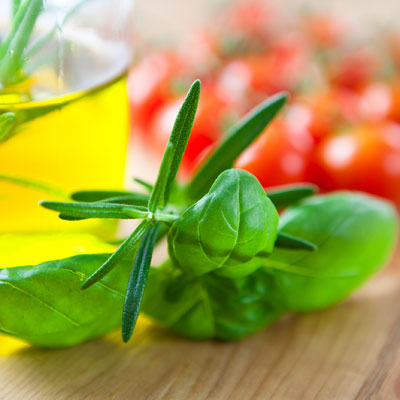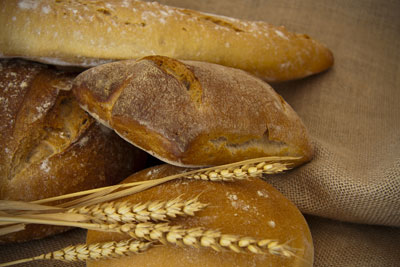
Words that sell
April 13, 2012
By
Brandi Cowen
The language of food marketing is a fickle thing. Just like slang, what’s fly one day can be uncool the next.
The language of food marketing is a fickle thing. Just like slang, what’s fly one day can be uncool the next.
 |
|
| Highlight your store’s use of healthy ingredients, such as fresh herbs, whole grains and olive oil.
|
Consumers are fluent in the lingo of the moment. They’re also a bit like teenagers. Speak their language and you win them over. Misuse it or confuse it with the language of days gone by and you risk being dismissed as out of touch.
Today’s words that sell tap into top food trends, such as healthy and “free from” foods, according to Bob Goldin, executive vice-president with the market research firm Technomic. He says words like “fresh” and “natural” resonate well with consumers because they evoke ideas of nutritious, made-to-order products.
Following from these trends, highlighting nutritious ingredients such as whole grains, olive oil and sea salt can help win over consumers. Call-outs spotlighting premium ingredients are also effective. The FSR Chain Menu Tracker, a joint project between the Toronto-based consulting firm fsStrategy and market research firm The NPD Group Canada, analyzes the menus of major full-service restaurant chains across the country. The 2012 survey found that specialty breads and cheeses and aged and premium meats are all popping up in menu descriptions designed to entice hungry diners. Rounding out the list are specialty nuts, spinach, greens and specialty peppers.
“I’m not necessarily suggesting that consumers are eating healthy or are eating fresher or are eating more premium ingredient products, but I think you have to tie into their aspirations, and a lot of those are around eating healthier and eating better,” Goldin says.
Geoff Wilson, president of fsStrategy, agrees.
 |
|
| Use words like craft and artisanal to describe your fresh baked breads and baked goods.
|
“It’s that direction towards a healthier lifestyle and a more informed lifestyle. Authenticity, freshness and even statements around customization are really important to consumers right now,” he says. “I want to have it my way: I don’t want it with this, I want it with that…. I’d like a low-fat balsamic dressing as opposed to a high-fat ranch dressing. That customization is very important to the consumer today.”
The average consumer may be keeping an eye out for words that hit on healthier lifestyles, but he also wants to define what that healthier lifestyle means for him as an individual. Many are well educated about food these days, especially as it relates to their individual dietary needs. They’re drawn to products that allow them to apply that knowledge to make their own choices.
“If you tell them that it’s Heart Smart or if you tell them that it’s better for you or vegetarian, that’s acceptable, but if you tell them that it’s low-fat or it’s low-carb, that’s directing them too much,” says Wilson.
Besides which, Goldin says that many consumers continue to associate words like low-fat with less flavourful or worse tasting products. Education is also contributing to the declining appeal of low-fat products. Last year, Packaged Facts reported that more consumers are starting to get that low-fat foods are not necessarily healthier than full-fat options. A more nuanced understanding of the differences between types of fats is driving consumers to seek out healthier polyunsaturated and monounsaturated fats, rather than turning to products bearing low-fat and fat-free claims.
Consumers are also catching on to the tactics that have driven food marketing in the past. Those who have been duped by a product trumpeting that it is low-fat only to discover that it contains just as many calories as a similar full-fat version don’t tend to forget it. Instead, they view foods with a more critical eye and greater skepticism when it comes to health and nutrition claims. That’s why Goldin says he believes holistic claims carry more appeal.
If you’re focusing on flavour to sell your products, Wilson suggests emphasizing fruity, hot and spicy, citrus, sweet and smoky, and berry taste profiles in your products. The FSR Chain Menu Tracker found these, as well as honey, are among the most popular flavour descriptors on menus right now.
Sell with a story
There’s a lot of consumer appeal to be found in words that help to tell the story behind a food. “Local” scores big points with many consumers, but be aware that some may shy away because they expect a local product to sell at a higher price point. Other terms and phrases that conjure up images of smaller scale farming and pastoral scenes also resonate well.
“‘Craft’ and ‘artisanal’ are also positives. They connote small batch, where a lot of skill goes into the manufacture,” says Goldin. Large grocery chains may purport to offer artisan product lines, but consumers put more stock in the word when it’s applied to a loaf baked fresh in your bakery’s ovens.
Depending on the customer demographic you’re trying to target, “organic” may also be a big draw. Goldin says the term “has some appeal to some consumers, but to many it just equals high price.” He says organic foods tend to appeal to consumers between the ages of 25 and 45 earning above-average incomes.
Today’s consumers are smarter about what you’re selling, and so you must in turn be smarter about your customer in order to make a sale. That savvy covers everything from what ingredients go into a dish to how that dish is prepared, even if it’s not a family favourite they grew up watching Mom make.
“We’re not dealing with a consumer who is uneducated,” says Wilson. “We’re dealing today with consumers who understand food. They watch The Food Network, they travel. It’s not all of them, but even if you don’t have a huge income, you’re a little more knowledgeable about different kinds of foods and ethnic foods.”
Combined with more ethnically diverse urban areas, this has fed a growing consumer appetite for “authentic” foods. But many savvy consumers aren’t swayed simply by seeing the word splashed on a menu board. In this case it’s subtlety that makes the sale.
“Authenticity is always appealing, but saying ‘we’re authentic’ doesn’t always cut it,” says Goldin. He suggests tying your ingredients and preparation methods into the idea of authenticity. Highlighting that your bakery uses real Belgian chocolate or a pastry technique handed down from master bakers in Europe may do more to convince a consumer of your authenticity than simply printing the word “authentic” on your marketing materials.
Last but not least, value for money remains an important consideration for many consumers. Seventy per cent of Canadians believe that the New Year kicked off in a recession, according to an online survey sponsored by the Economic Club of Canada. Consumers are still feeling the pinch in their wallets and they’re skeptical when they hear experts saying the recession is over. Times are still tough and consumers want to know they’re spending their hard-earned food dollars wisely, especially when indulging in little luxuries.
“Some of these words that connote super sizing turn some customers off, but a family pack is a good thing because it connotes value,” says Goldin. He adds, “Things that connote excess may be a bit of a turnoff.”
The words that sell today may not be the same words that sell tomorrow. Capturing a slice of the market depends on not only being hip to your customers’ evolving preferences, but also being able to communicate that you can fulfil their needs in words that really speak to them.
Print this page
Leave a Reply